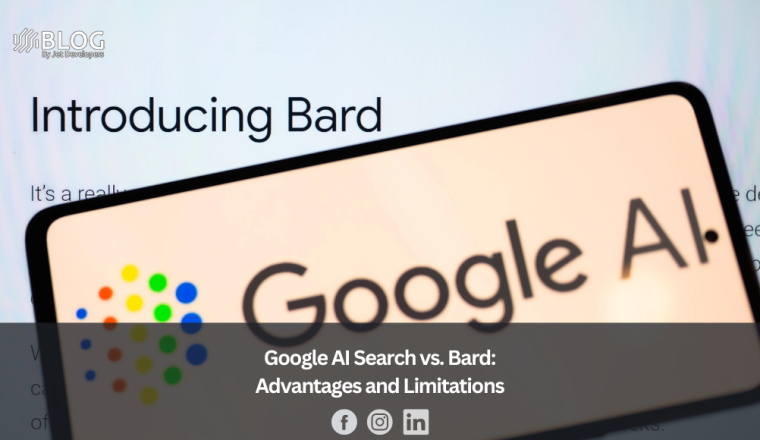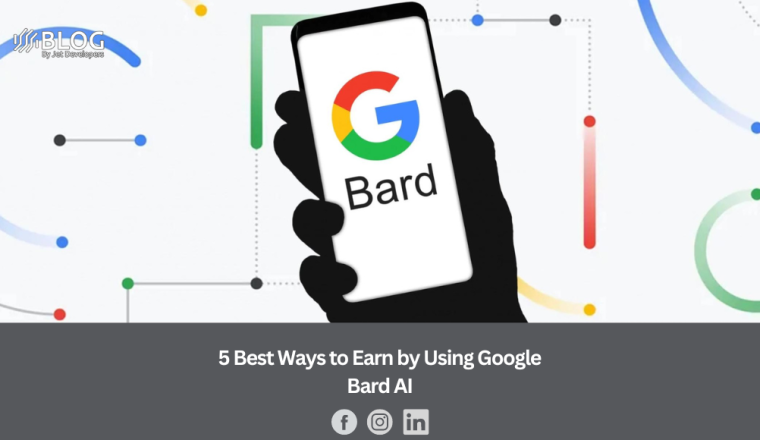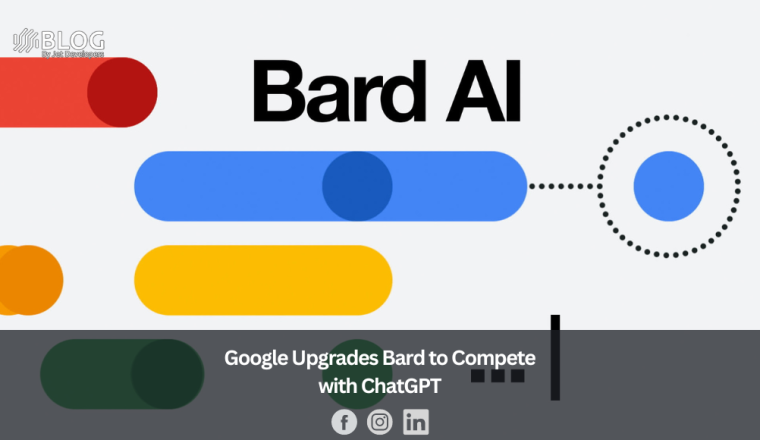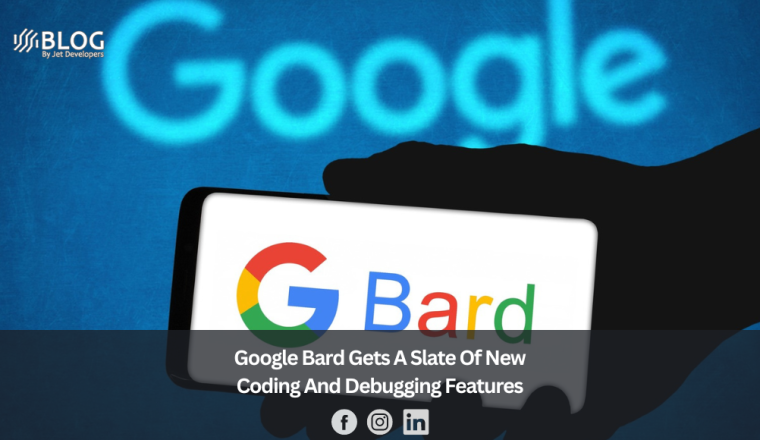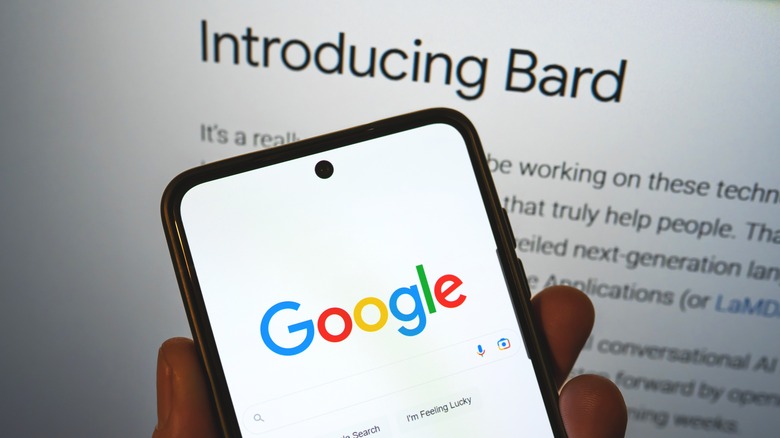Google AI Search vs. Bard: Advantages and Limitations
Artificial Intelligence (AI) has seamlessly integrated into almost every aspect of our lives, and search engines are no exception.
Just recently, the emergence of ChatGPT, a sophisticated language model developed by OpenAI, demonstrated the potential of AI in generating human-like text and engaging in meaningful conversations. This breakthrough laid the foundation for AI integration in search engines.
Leading the search engine industry, Google has introduced an AI-powered update to its core search product, aiming to strengthen its competitiveness against Microsoft’s Bing search, which utilizes OpenAI technology.
While Google already features its own AI chatbot called Bard, Google AI Search leverages AI to enhance the precision and relevance of search results. As a result, it remains the preferred choice for informational queries and locating specific information online.
On the other hand, Bard, with its chatbot persona and conversational capabilities, is specifically designed for creative collaboration. It enables users to engage in human-like conversations and harness AI-generated assistance for tasks like writing code.
As Google and its competitors continue to innovate in AI-powered search, it becomes essential to explore the advantages and limitations of Google AI Search and Bard, as well as their similarities, differences, and use cases. By examining their unique features and capabilities, we can gain valuable insights into how these AI tools can enhance our access to information in today’s digital era.
The Evolution of Search Engines
Before we dive into the day’s discussion, let’s go on a short trip down memory lane and review the history of search engines across the past decades as it evolves alongside the rapid advancement of technology.
From the early days of basic keyword-based searches to the emergence of AI-powered search engines, search engines have revolutionized how we navigate the vast expanse of the internet.
The birth of search engines can be traced back to 1990 when the first search advance was “Archie”. Developed by Alan Emtage, it made it possible to search through a site’s file directories. Afterward, we saw the development of Veronica, a service from the University of Nevada System Computing Services that provided searches for plain text files, and Gopher, which made it possible to search through online databases and text files.
After the creation of the World Wide Web, there were advances such as the WWW Virtual Library, created by Tim Berners-Lee, and the initial iteration of Yahoo. But these weren’t search engines as we know them. They were human-assembled catalogs of helpful web links. They used simple indexing techniques to organize and retrieve information. These primitive search tools were limited in their capabilities and often struggled to deliver relevant results.
As the internet expanded exponentially, search engines underwent a significant transformation with the introduction of web crawlers. These used automatic programs, called robots or spiders, to request webpages and report their findings to a database.
In 1994, an early recognized crawler search engine, WebCrawler, employed crawling technology to index web pages, allowing users to search for specific keywords across various websites. This marked a significant milestone in the evolution of search engines. By mid-1994, Lycos became the first search engine to have a whole page search for more than a million pages.
In the subsequent years, we witnessed the dominance of search engines like Yahoo! and AltaVista, which adopted a keyword-based search approach. Users were required to input specific keywords or phrases to retrieve relevant results. AltaVista also gave users the first successful Boolean search options.
In 1998, Google burst onto the scene, introducing a groundbreaking algorithm called PageRank. This innovation revolutionized search engines by ranking web pages based on relevance and popularity. Google’s efficient indexing methods and emphasis on delivering high-quality search results propelled it to become the dominant search engine worldwide.
Over the years, search engines have evolved significantly, incorporating increasingly complex algorithms to provide more accurate and relevant search results.
More recently, AI-powered search engines have taken search to a new level. These search engines utilize machine learning algorithms to analyze vast amounts of data, learning from user behavior and feedback to deliver personalized and highly relevant results.
Google AI Search

Google is now transforming its traditional search functionalities with generative AI. During the 2023 Google I/O, Google Search AI was announced.
With this new tool, Google Search aims to provide users with more conversational and contextually relevant answers instead of a traditional list of links.
The generative AI in Google Search, known as Search Generative Experience (SGE), is an experiment that adds AI-powered snapshots of key information to the search results. The AI snapshots will give users a text response to search queries and other relevant information.
Google also introduces a Conversational mode, allowing users to ask follow-up questions and engage in a more interactive dialogue with the search engine. This feature, reminiscent of Microsoft’s Bing Chat AI, enables users to refine their search queries and obtain more specific and tailored information.
The SGE experiment is being rolled out, and interested users in the United States can sign up for the Google Labs SGE experiment waitlist to participate and explore the new AI-powered search experience. As this experiment progresses, users can anticipate a more dynamic, personalized, and engaging search journey powered by AI technology.
This video showcases a version of Google Search that AI has completely taken over.
Google’s demonstration at I/O offers a glimpse into the approaching future of search, where AI-driven search engines are poised to become the go-to resource for users.
Benefits of Using Google Search AI
As Google integrates AI technology to enhance the user search experience, here are a few reasons why you might want to give Google Search AI a try.
Improved Understanding and Insights: Google Search AI will help users understand topics faster. Rather than manually sifting through vast information on the Internet, Google Search AI will provide relevant and concise summaries, allowing users to understand key points and gain new insights quickly.
Streamlined Shopping Experience: Google Search AI aims to facilitate shopping decisions. When searching for a product, users receive a snapshot highlighting essential factors to consider and presenting relevant products. This will include comprehensive product descriptions with reviews, ratings, prices, and images.
Enhanced Decision Making: Google Search AI will help in making decisions. Whether choosing a destination for a family vacation or a course to study at the university, Google Search AI will provide users with sufficient information to make a good decision more quickly and efficiently.
Conversational Search: With Google Search AI, you can ask questions and interact with tools like Chatbots.
Stay Updated: Google’s AI-powered search has access to vast amounts of information, ensuring you have the latest and most accurate information.
Limitations of Search AI
With Google’s incorporation of generative AI and LLMs into its Search AI, there are certain limitations to be aware of. These limitations primarily stem from the experimental nature of the Search Generative Experience (SGE) and the inherent characteristics of the underlying models.
Here are some notable limitations and challenges:
Misinterpretation: In some cases, SGE may identify relevant information to support its snapshot but could misinterpret language, resulting in a slight change in the meaning of the output.
Hallucination: Google’s SGE occasionally provides inaccurate or ‘made up’ information or misrepresents facts and insights.
Bias: Google’s SGE aims to corroborate responses with high-quality resources. This could introduce biases in the highly ranked results, similar to those observed in traditional search results.
Opinionated content implying persona: Although Google’s SGE is designed to maintain a neutral and objective tone, sometimes its output may reflect opinions on the web that could give an impression of the model displaying a persona.
Duplication or contradiction with existing Search features: Since SGE is integrated alongside other search results, its output may appear contradictory to additional information on the search results page.
Google acknowledges these limitations and continues to refine and improve the models through ongoing updates and fine-tuning.
As SGE evolves, these limitations should be addressed to enhance the overall search experience and mitigate any potential drawbacks of generative AI in Search.
Bard

Bard is an AI chatbot developed by Google, similar to the popular ChatGPT.
With Bard, users can tap into its creative capabilities and utilize its vast knowledge to generate code snippets, solve math problems, and more. It’s like having a helpful companion or a virtual problem solver.
Like the Search AI, Bard is powered by Google’s advanced large language model (LLM) called PaLM 2. However, it does not have the web-browsing capabilities of traditional Google Search. Yet, it shines in its ability to provide human-like text based on its given prompts.
You can engage in conversations with Bard, and it will respond with informative and comprehensive answers, drawing from its extensive training on a massive amount of text data.
Bard AI defines itself as “I am Bard, a large language model, also known as a conversational AI or chatbot trained to be informative and comprehensive. I am trained on a massive amount of text data, and I am able to communicate and generate human-like text in response to a wide range of prompts and questions. For example, I can provide summaries of factual topics or create stories.”
Benefits of Using Bard
Here are a few benefits of using Bard AI:
Updated Information: Unlike other AI chatbots, Bard leverages the power of Google Search to provide up-to-date information from the web. This feature proves invaluable for research purposes and gathering the most recent data on various topics.
Human-Like Conversations: Bard excels in understanding natural language prompts, whether entered through text or spoken commands. It engages in conversations that closely resemble human interactions, making it a user-friendly chatbot. Its conversational capabilities rival those of ChatGPT and Bing Chat.
Specific Generative Capabilities: Bard is capable of creative writing. It can generate content in diverse styles and formats, from news articles and blog posts to letters and email messages.
Voice Command Support: Google Bard accepts voice commands, making it more convenient and accessible. Users can utilize the microphone option to input prompts to the chatbot. This feature differentiates it from OpenAI’s ChatGPT, which lacks native voice command support.
Limitations of Bard
Despite the benefits of Bard AI, there are a few limitations:
Creativity Limitations: While Bard possesses creative writing abilities, it is not always consistently creative. Some of its responses may lack originality or may not directly address the questions asked. It can produce ambiguous or irrelevant answers or unoriginal content.
No Citations: Bard can generate factual information and provide relevant answers, which can be helpful for research purposes. However, Bard does not cite its sources or provide links to validate the data it generates, so users are tasked with verifying the information provided by Bard.
Inconsistencies: Bard may provide inconsistent and incorrect responses, confusing users. Users should be aware of these inconsistencies and carefully evaluate the reliability of any information received from Bard.
Hallucinations: Bard has been criticized, including by Google employees, for providing not only false answers to queries but also dangerous advice. Bard has also been found to be less useful than Bing or ChatGPT in some tests.
Comparison of Google AI Search and Bard
Google AI Search and Bard are two distinct AI-powered search engines developed by Google. While they share some similarities, they also have notable differences in functionalities and use cases.
Key Similarities between Google AI Search and Bard:
AI-Powered: Both Google AI Search and Bard utilize artificial intelligence to enhance the search experience and generate relevant information.
Conversational Abilities: Both search engines have conversational capabilities, allowing users to ask questions and receive detailed responses.
Integration with Google’s Advanced LLM: Both search engines leverage Google’s large language model (LLM) technology to generate human-like text responses.
Information Retrieval: Both Google AI Search and Bard aim to retrieve relevant information and provide answers to user queries. They can provide factual information, summaries, and insights on various topics.
Real-Time Internet Access: Unlike other AI chatbots, Google AI Search and Bard AI can access real-time information. Hence, they can provide access to up-to-date information from the web.
Key Differences between Google AI Search and Bard:
Search Functionality: Google AI Search primarily provides contextually relevant answers to search queries by adding AI-powered snapshots to the search results. In contrast, Bard is a chatbot that generates human-like text based on user prompts but does not have web-browsing capabilities like traditional search engines.
Use Cases: Google AI Search is designed for traditional search purposes, such as finding information, making purchase decisions, and general research. Conversely, Bard is more suitable for creative collaboration, generating code snippets, creative writing, and engaging in human-like conversations.
Use Cases for Each Search Engine:
Google AI Search: It is better suited for finding information, making purchase decisions, conducting research, and obtaining contextually relevant answers to various queries.
Bard: It is well-suited for creative collaboration, generating code snippets, solving math problems, creative writing, obtaining informative summaries of factual topics, and more.
Which Search Engine is Better for Different Search Queries:
Google AI Search is better for traditional information-seeking queries, such as factual information, product searches, or general research. For creative purposes, code generation, creative writing, or engaging in human-like conversations, Bard is more suitable.
The Future of AI-Powered Search
The future of AI-powered search engines holds tremendous potential and is poised to transform how we discover and interact with information online. As AI-powered search tools advance, search engines will become more intelligent, personalized, and engaging, providing search experiences that are highly tailored to individual needs.
One key aspect of the future of AI-powered search engines is integrating natural language processing (NLP) capabilities. NLP allows search engines to understand and interpret user queries more nuanced and contextually. Instead of relying solely on keywords, search engines will be able to comprehend the intent behind user queries, leading to more accurate and relevant search results.
Another important trend is the use of generative AI models in search engines. These models can generate human-like responses and even create original content. This opens up possibilities for more interactive and conversational search experiences, where users can engage in dynamic dialogues with AI-powered assistants to refine their search queries and receive tailored recommendations.
Personalization will also play a significant role in the future of AI-powered search engines. Search engines can deliver highly personalized search results as they gather more data about users’ preferences, behaviors, and past interactions. This will enable search engines to anticipate users’ needs, provide recommendations based on their interests, and offer a more customized browsing experience.
However, along with the opportunities, there are also challenges that AI-powered search engines will face in the future. Privacy concerns will become even more critical as search engines collect and process vast amounts of user data. Striking a balance between delivering personalized experiences and respecting user privacy will be crucial.
Additionally, ensuring transparency and accountability in AI algorithms will be a crucial challenge. As AI models become more complex and sophisticated, it becomes increasingly important to understand how they make decisions and to address potential biases or ethical concerns that may arise.



